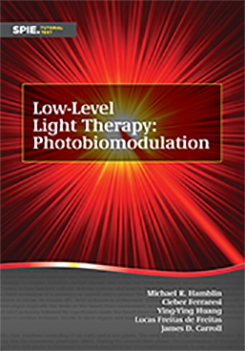|
3.1 Chromophores 3.1.1 Cytochrome c oxidase Cytochrome c oxidase (CCO) is the terminal enzyme of the electron transport chain that mediates the electron transfer from cytochrome c to molecular oxygen. Several lines of evidence show that CCO acts as a photoacceptor and transducer of photosignals in the red and NIR regions of the light spectrum. It seems that LLLT increases the availability of electrons for the reduction of molecular oxygen in the catalytic center of CCO, which increases the mitochondrial membrane potential (MMP) and the levels of ATP, cAMP, and ROS, as well. LLLT increases the activity of complexes I, II, III, and IV, and succinate dehydrogenase in the electron transfer chain. CCO is known as complex IV and, as mentioned before, appears to be the primary photoacceptor. This assumption is supported by the increased oxygen consumption during low-level light irradiation (the majority of the oxygen consumption of a cell occurs at complex IV in the mitochondria) and by the fact that sodium azide, a CCO inhibitor, prevents the beneficial effect of LLLT. Besides ATP and cAMP, the nitric oxide (NO) level is increased, either by being released from metal complexes in CCO (CCO has two heme and two copper centers) or by up-regulation of the activity of CCO as a nitrite reductase. |
|
|


